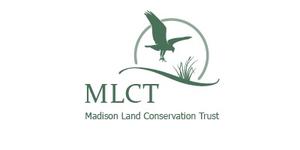The Neck River Trail offers a remarkable variety of ecological settings including a lovely stretch along the Neck River, a forest rich in conifers including pines and spruce, and sections of oak-hickory forest more typical of our area. The trail also joins the Blinnshed Ridge Trail to the west.
The trail begins by walking west on a State Forest woods road. Almost immediately, the trail passes through the remnants of a red pine plantation. A few trees have survived the intense competition from hardwoods, but their small crowns suggest that their battle will be lost before long. Soon, near a group of large rocks, the trail splits—one branch leads south, the other continues along the woods road. South, the trail forms a loop and rejoins the woods road 500 feet ahead which proceeds on and joins the Blinnshed Ridge Trail.
Following the loop trail counterclockwise leads to a forest that is primarily oak and hickory with understories dominated by blue beech, ironwood, American beech, dogwood and red maple. At one point, a group of grey birch reveals where a fire occurred sometime in the past. Gradually, the presence of white pines, both large and small, affirms that this area was planted earlier. These conifers provide unique character to the forest, especially in winter.
In a grove of pines, just before reaching a stream crossing, the loop trail turns left and follows the stream to its junction with the Neck River. Straight ahead, the woods road trail continues west where, in 800 feet, it joins the Blinnshed Ridge Trail.
On the way to the Blinnshed Ridge Trail, the wooded road crosses the stream, bears right and then left near a large rock outcropping to the north. The broad spreading crowns of the trees by the outcrop reveal that these trees developed in the open without competition. This former “openness” is indicated also by the presence of redcedar and black cherry trees which grew from seeds deposited in open fields by birds. The end of the outcrop marks the junction with the Blinnshed Ridge Trail and its loop.
The Neck River Trail loop heads south (left) along the tributary stream. Additionally, for some distance the trail will follow wetlands on the right delineated by skunk cabbage, false helebore and spicebush. Marsh marigolds (cowslips) line the margins of the flowing streams.
Near where the small stream meets the Neck River, the trail passes through what was an old charcoal pit. Charcoal is still evident in the soil and the remains of several grey birches also indicate that fire occurred here. Several other charcoal pits are scattered through the area and are defined by their raised shape and circumscribing ditch.
The trail passes through thickets of grey dogwood, young black birch and some wild azalea, high bush blueberry and witch-hazel which provide excellent cover for birds. The continued presence of conifers, white pine and then Norway spruce, indicates that most of this block of forest was planted by humans. Conifers provide roosting and nesting cover for several bird species including blue jays, owls and grouse, and add a diversity unique to this part of Connecticut. A harvest was conducted in 1999 to remove trees that were suppressing growth of the conifers.
The river here is slow-moving. The trail swings east (left) along the southern end of the loop where a large beech tree leans out over the river, near the State Forest border, indicated by yellow blazes, metal tags, and eventually by a barbed-wire fence and stonewall. The trail bears north where the stonewall ends then splits to form a small loop. The path ahead (left branch) leads to the junction by the big rocks.
This “cross-over” branch has an abundance of large pines which are perhaps the parents of some of the understory trees. Many of the small pines appear to be in rows, indicating that they probably were planted. Here, there is also a charcoal mound marked by an interpretive sign.
Going right around the small loop will lead to large tulip poplar and some yellow birch trees. At this point, the trail turns north along a stone wall and continue along the edge of a wetland to the “cross-over” trail junction. Bearing right, past a few red pine trees to the woods road junction near the large rocks, and then turning right will lead back to the trailhead.

Opening Hill Road can be accessed off Durham Road (Route 79) directly from the north or from the south from Warpas Road, to Winterhill Road and finally connecting to Opening Hill. Continue on Opening Hill past The Country Day School. Parking and the beginning of the trail will be on the right.
Success! A new password has been emailed to you.